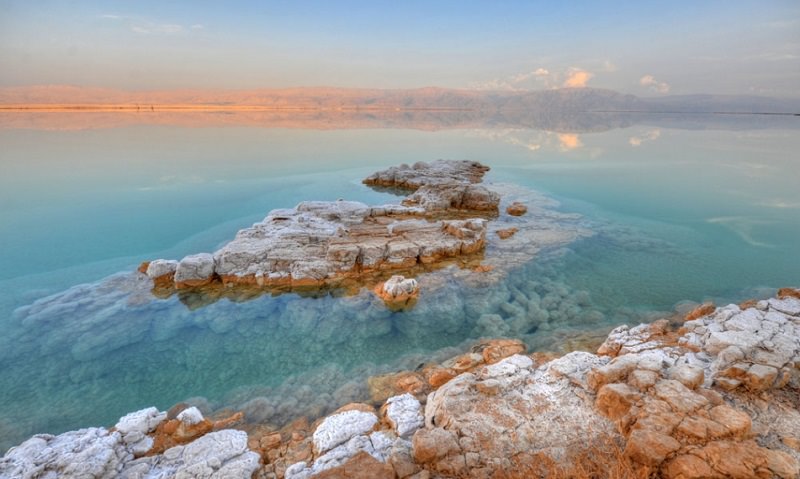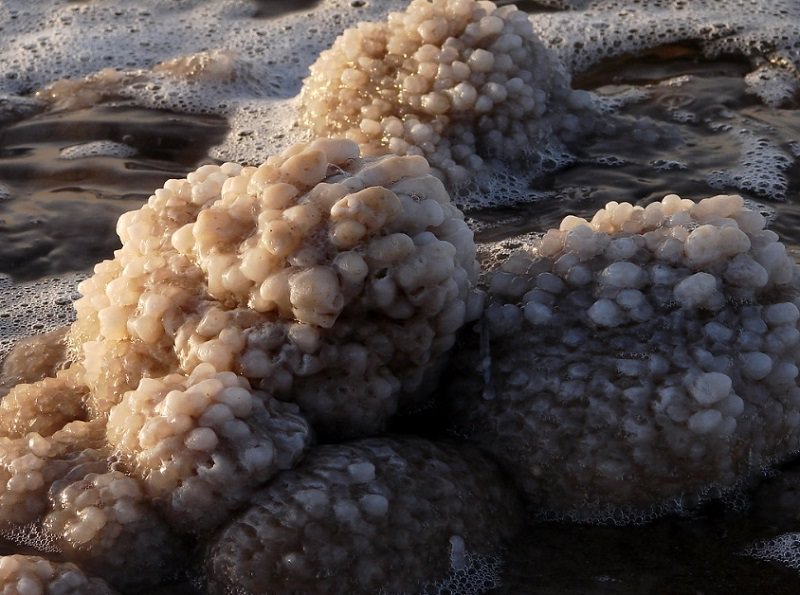The Dead Sea, an enigmatic body of water straddling the borders of Jordan, Israel, and the West Bank, has long captivated human imagination with its extreme salinity and reputation for lifelessness. This unique landlocked lake, resting at the lowest point on Earth, presents one of the most challenging environments for life on our planet. So what or does anything live in the Dead Sea?
Its waters, nearly ten times saltier than the average ocean, seem to promise a barren, inhospitable realm. Yet, beneath the surface of this saline giant lies a hidden world that challenges our perceptions of where life can exist.
Let’s dive into the depths of the Dead Sea to uncover the surprising truth about the resilient organisms that call this extreme environment home, exploring how life adapts and thrives in conditions once thought impossible to survive.
What Country Is the Dead Sea In?
The Dead Sea is located at the border of three regions:
- Jordan to the east
- Israel to the west
- Israeli-occupied West Bank to the southwest
Despite its name, the Dead Sea is actually a landlocked lake, not a sea. It holds the distinction of being the lowest point on Earth, lying approximately 423 meters (1,388 feet) below sea level.
Why is it Difficult for Fish to Live in the Dead Sea?
The Dead Sea’s most defining characteristic is its extreme saltiness. With a salinity of 33.7%, it’s nearly ten times saltier than typical ocean water. This hypersaline environment poses significant challenges for life forms. The high salt concentration creates osmotic pressure that can cause cells to lose water rapidly, leading to dehydration and death for most organisms.
Moreover, the Dead Sea lacks outlets, meaning that water can only be left through evaporation. This process continually concentrates the minerals, making the environment increasingly inhospitable over time. These conditions explain why fish and other larger aquatic creatures cannot survive in the Dead Sea. Any fish accidentally swept in from the Jordan River or smaller streams quickly perish in the hostile waters.
Microscopic Life Found in the Dead Sea
Despite these extreme conditions, life finds a way. In the 1930s, microbiologist Benjamin Elazari-Volcani made a groundbreaking discovery: the Dead Sea wasn’t entirely dead after all. His research revealed a hidden world of microscopic life forms that had adapted to thrive in this challenging environment.
These resilient microorganisms include various species of bacteria, archaea, algae, and protozoans. These tiny life forms have evolved unique mechanisms to cope with high salt concentrations, such as producing special proteins that protect their cellular structures from the damaging effects of salt.
What Live in the Dead Sea?
While larger animals are absent, the Dead Sea hosts a variety of microbial life. Halophilic (salt-loving) bacteria and archaea form the backbone of this ecosystem. These microorganisms have adapted to not just tolerate but require high salt concentrations to survive.
One notable inhabitant is the algae Dunaliella. This microscopic alga can thrive in salt concentrations ranging from 2% to 35%, making it perfectly suited for the Dead Sea’s fluctuating conditions. Dunaliella plays a crucial role in the Dead Sea’s ecosystem and can even contribute to some of its more unusual phenomena.
Freshwater Springs and Diverse Life

Surprisingly, the Dead Sea harbors hidden oases of life in the form of freshwater springs:
- Located at the base of deep underwater craters
- Some craters reach depths of 100 feet and widths of 50 feet
- Springs can extend up to 90 feet long
These springs create unique microenvironments that support a greater diversity of microbial life, including dense communities of cyanobacteria, especially in hot springs like Zerka Ma’in and Zara.
Rare Phenomena: The Red Dead Sea
In 1980, after an unusually rainy winter, witnesses observed a rare and spectacular event: the Dead Sea turned red. This phenomenon was caused by an interaction between Dunaliella algae and red-pigmented halobacteria.
During floods, the Dead Sea’s salinity can temporarily drop from its usual 35% to around 30% or lower. This change in conditions allows for a brief explosion of life. Dunaliella algae bloom in these conditions, attracting halobacteria that feed on the algae’s cellular contents. The red pigments in these bacteria then create the striking red coloration of the water.
Can You Swim in the Dead Sea?
Yes, you can swim in the Dead Sea, but it’s an experience unlike any other! The high mineral content makes the water extremely buoyant, allowing people to float effortlessly on the surface. Many tourists visit the Dead Sea for this unique experience and to enjoy the purported health benefits of its mineral-rich waters.
However, swimmers should exercise caution. The high salt content can be irritating to the eyes and any open cuts or sores. It’s also important not to swallow the water, as it can cause serious health issues if ingested in large quantities.
Conclusion
While the Dead Sea may lack the diverse marine life found in other bodies of water, it’s far from a lifeless environment. The presence of adapted microorganisms, thriving in one of Earth’s most extreme habitats, showcases the incredible resilience and adaptability of life.
From microscopic bacteria to rare algal blooms that paint the sea red, the Dead Sea continues to surprise and fascinate scientists and visitors alike. It serves as a testament to life’s tenacity and as a unique laboratory for studying extremophiles – organisms that thrive in conditions once thought incompatible with life.
As we continue to explore and understand this remarkable ecosystem, the Dead Sea reminds us that life can flourish in the most unexpected places, challenging our perceptions of what’s possible in nature. It’s a vivid example of how, even in the harshest environments, life finds a way.



